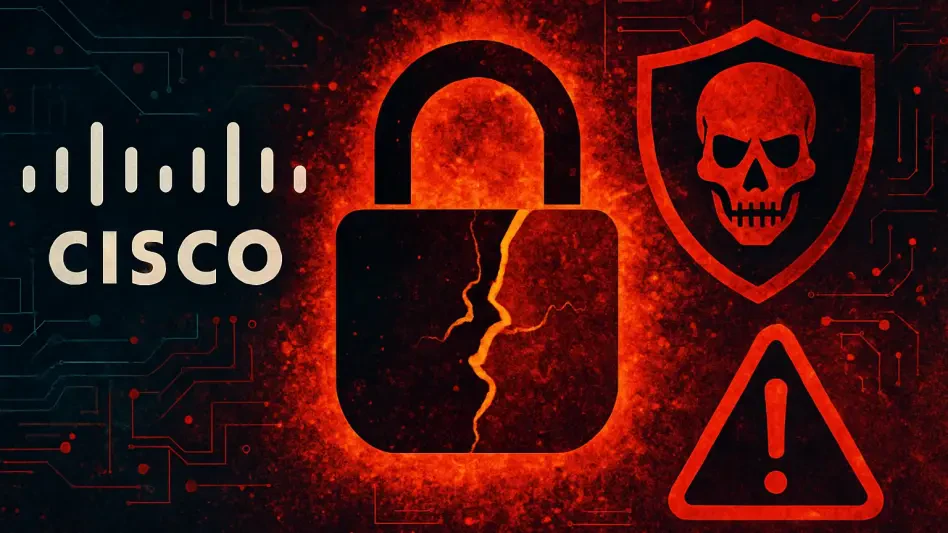In a digital landscape where cyber threats evolve at an alarming pace, the persistence of vulnerabilities in critical network infrastructure raises serious concerns for global security, especially since data reveals that approximately 48,000 internet-facing Cisco Adaptive Security Appliances (ASA) and Firepower Threat Defense (FTD) devices remain unpatched. Despite explicit warnings and months of active exploitation, these devices are still exposed to severe zero-day vulnerabilities, identified as CVE-2025-20333 and CVE-2025-20362, which have been targeted by sophisticated attackers, putting organizations at significant risk. With a substantial number of these devices located in key regions like the United States, United Kingdom, and Japan, the scale of potential impact is staggering. This alarming statistic highlights a troubling gap between cybersecurity alerts and organizational action, prompting an urgent need to explore why so many systems remain defenseless against known threats. The implications for both government and private sector entities are profound, as these devices often safeguard critical infrastructure.
Unpacking the Scale of the Threat
The sheer number of vulnerable Cisco ASA and FTD devices—around 48,000 globally—paints a grim picture of cybersecurity readiness among organizations. These devices, integral to network security for countless government and corporate entities, are exposed to exploits that have been actively targeted for months. Data indicates that the majority of these unpatched systems are in technologically advanced nations, with the United States hosting the largest share, followed by countries like the United Kingdom, Japan, and Germany. This widespread vulnerability underscores a systemic issue: despite the availability of patches and explicit guidance from Cisco, many organizations have failed to act. The risks are not hypothetical; real-world attacks exploiting these flaws have already been documented, targeting high-value infrastructure. This delay in response amplifies the potential for data breaches, service disruptions, and even national security threats, as attackers continue to capitalize on known weaknesses in these critical systems.
Beyond the numbers, the nature of the threat adds another layer of urgency to this crisis. The vulnerabilities in question, CVE-2025-20333 and CVE-2025-20362, have been linked to sophisticated campaigns often attributed to state-sponsored actors. These adversaries employ advanced tactics, such as disabling logging mechanisms and intercepting command-line interface commands, to evade detection and hinder forensic analysis. Reports of intentional device crashes further complicate efforts to diagnose and mitigate breaches. Such methods suggest a high level of skill and persistence, indicating that the actors behind these attacks are not opportunistic hackers but rather well-resourced entities with strategic objectives. The fact that similar tactics were observed in earlier campaigns, like ArcaneDoor, points to a consistent and dangerous adversary. For organizations relying on Cisco devices, this reality demands immediate attention to prevent further exploitation of these critical weaknesses.
Sophisticated Attacks and Evolving Tactics
Delving into the specifics of the attacks reveals a chilling level of sophistication that underscores the urgency of addressing these vulnerabilities. Since initial reports surfaced earlier this year, evidence has pointed to state-sponsored threat actors targeting government organizations using Cisco ASA 5500-X Series devices. These attackers have demonstrated an ability to bypass traditional security measures, employing methods designed to obscure their activities. By disabling essential logging functions and manipulating system commands, they create blind spots for defenders, making it nearly impossible to track their movements in real time. Additionally, deliberate system crashes have been used to frustrate diagnostic efforts, leaving organizations struggling to understand the scope of a breach. This level of evasion highlights the need for robust, proactive security measures that go beyond reactive patching to anticipate and counter such advanced threats.
Further complicating the situation is the evidence of preemptive reconnaissance by unidentified actors. Weeks before the public disclosure of these zero-day vulnerabilities, a notable surge in scanning activity targeting Cisco ASA devices was detected. This activity suggests that adversaries may have been mapping vulnerable systems well in advance, preparing for coordinated exploitation. While the exact perpetrators remain unclear, the timing and scale of this scanning indicate a deliberate effort to identify and exploit weaknesses before patches could be widely implemented. For organizations, this serves as a stark reminder that the window of opportunity to secure systems is often narrower than anticipated. The combination of advanced attack methods and early reconnaissance efforts creates a perfect storm, where unpatched devices become easy targets for well-prepared threat actors seeking to maximize damage or gain unauthorized access to sensitive networks.
Challenges in Bridging the Response Gap
One of the most pressing issues illuminated by this situation is the persistent disconnect between cybersecurity warnings and effective organizational response. Despite months of alerts from Cisco and various cybersecurity agencies, the high number of unpatched devices suggests deep-rooted challenges in implementing timely updates. Factors such as resource constraints, complex IT environments, and lack of awareness may contribute to this inertia. For many entities, especially those managing critical infrastructure, the process of testing and deploying patches can be fraught with operational risks, leading to delays. However, the cost of inaction far outweighs these hurdles, as evidenced by the ongoing exploitation of these flaws. This gap in response not only endangers individual organizations but also poses broader risks to interconnected systems, where a single breach can cascade into widespread disruption.
Addressing this response gap requires a multifaceted approach that goes beyond simply applying patches. Cisco has provided clear recommendations, urging organizations to verify the status of their devices, upgrade to fixed software versions, and replace equipment nearing end-of-support status. For compromised systems, resetting to factory defaults with updated credentials and certificates is advised, alongside reporting incidents to national cybersecurity authorities. Additionally, a separate but related vulnerability, CVE-2025-20352, affecting Cisco routers and switches, serves as a reminder that threats extend across product lines, necessitating comprehensive audits. The scale of unpatched systems—48,000 and counting—demands a cultural shift toward prioritizing cybersecurity as a core operational imperative. Without concerted effort and accountability, the cycle of delayed responses will continue, leaving critical infrastructure exposed to ever-evolving cyber threats.
Moving Forward with Urgency
Reflecting on the events surrounding these Cisco vulnerabilities, it becomes evident that nearly 48,000 ASA and FTD devices linger in a state of risk due to unaddressed zero-day exploits. Sophisticated attacks, often tied to state-sponsored actors, exploited these flaws with tactics that evaded detection and disrupted diagnostics. Looking ahead, organizations must adopt a proactive stance by prioritizing immediate updates and adhering to Cisco’s guidance on device resets and software upgrades. Collaboration with cybersecurity authorities proves essential in mitigating damage and sharing intelligence on emerging threats. This episode serves as a critical lesson in the importance of rapid response mechanisms to protect vital infrastructure. By integrating security into operational frameworks and addressing systemic delays, entities can better safeguard against persistent adversaries. The path forward lies in sustained vigilance and a commitment to closing the gap between warning and action.








